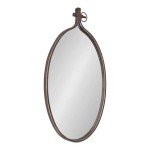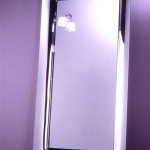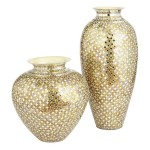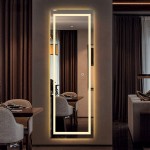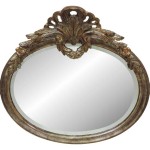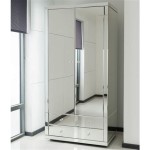How Much Does Mirror Cost Per Square Foot?
Mirrors are a versatile design element, capable of transforming spaces by creating illusions of depth and amplifying natural light. Understanding the cost of mirrors involves more than just square footage. Factors like the type of mirror, customization, installation, and location significantly impact the final price. This article will explore the various elements that influence mirror pricing, offering a comprehensive overview to aid in informed decision-making.
Types of Mirror Glass
The type of glass used is a primary factor in determining the cost per square foot. Standard glass mirrors are the most common and affordable option. These mirrors are typically made with annealed glass, offering good reflectivity for everyday use. For more specialized applications, other glass types are available, each with varying price points.
Low-iron glass mirrors, for example, offer superior clarity and color accuracy, making them ideal for bathrooms, vanity areas, and decorative applications where true color representation is crucial. Their enhanced manufacturing process leads to a higher price tag compared to standard glass mirrors. Tempered glass mirrors, known for their durability and safety, are another option. The tempering process makes the glass substantially stronger and resistant to breakage, making it suitable for high-traffic areas or gym walls. This added safety comes at a premium, increasing the cost per square foot compared to standard and low-iron mirrors.
Customization and Features
Beyond the type of glass, customization options significantly impact the final cost. Adding features such as beveling, etching, or shaping alters the complexity of the fabrication process, influencing the price. Beveling creates angled edges, adding a decorative touch. Etching involves creating designs or patterns on the mirror surface, often using sandblasting or chemical techniques. Shaped mirrors, cut to specific forms like circles, ovals, or custom designs, require more intricate manufacturing and often involve higher labor costs.
Furthermore, the addition of frames, backing, or specialized coatings impacts the overall cost. Frames can range from simple metal or wooden frames to more elaborate and custom-designed options. Backing materials provide added protection and support for the mirror, influencing both durability and cost. Specialized coatings, like anti-fog or anti-scratch coatings, enhance functionality but also add to the price.
Installation Costs
While the cost of the mirror itself is a significant factor, installation costs contribute substantially to the total project expenses. Installation complexity varies depending on the size, weight, and location of the mirror. Large, heavy mirrors require specialized equipment and potentially more installers, increasing labor costs. Installing mirrors in challenging locations, like high ceilings or uneven walls, also contributes to higher installation fees. Geographic location can also influence installation costs, as labor rates vary across different regions.
It is essential to obtain multiple quotes from reputable installers to compare pricing and ensure a fair estimate. Professional installation ensures the mirror is securely mounted, minimizing the risk of damage and maximizing its lifespan. Attempting DIY installation, especially for large or complex mirrors, can lead to costly mistakes and potential safety hazards.
Location and Vendor
The location of purchase and the specific vendor also play a role in determining the cost per square foot. Specialty glass retailers or custom mirror shops may offer higher-quality materials and specialized craftsmanship, which can be reflected in the price. Large home improvement stores often offer more standardized options at potentially lower price points, but customization options might be limited. Comparing prices from different vendors and considering the specific needs of the project are essential steps in the decision-making process.
Geographic location also influences pricing due to variations in material costs, transportation expenses, and local market conditions. Areas with higher living expenses generally have higher prices for goods and services, including mirrors and installation. Researching local vendors and obtaining multiple quotes within the same geographic area provide a more accurate understanding of regional pricing trends.
Thickness and Size
The thickness and overall size of the mirror also play a crucial role in determining the final cost. Thicker mirrors are generally more expensive as they require more raw material and are often more challenging to handle and install. Larger mirrors, while often calculated on a per-square-foot basis, may also incur additional charges due to increased transportation and handling difficulties. Very large mirrors may require specialized equipment for installation, further impacting the overall cost.

Fixr Com Bathroom Mirror Installation Cost Costs

Rectangular Decorative Mirror Glass Size 4 X 3 Feet

Fixr Com Bathroom Mirror Installation Cost Costs

Natural 6mm Mirror Glass For View

The Cost Of Mirror Glass Learn Blowing

Gym Glass Mirror Size 6 X 8 Feet

Frameless Mirror For Care Facilities And Commercial Use

How Much Does A Custom Cut Mirror Cost

Manufacturer Weight Cost Per Square Foot 6mm 12mm 15mm Reflective Clear Low E Curved Door Tempered Glass China Made In Com

Brown Polished Wall Mounted Full Length Glass Mirror For Home Size 4x1 5 Feet

